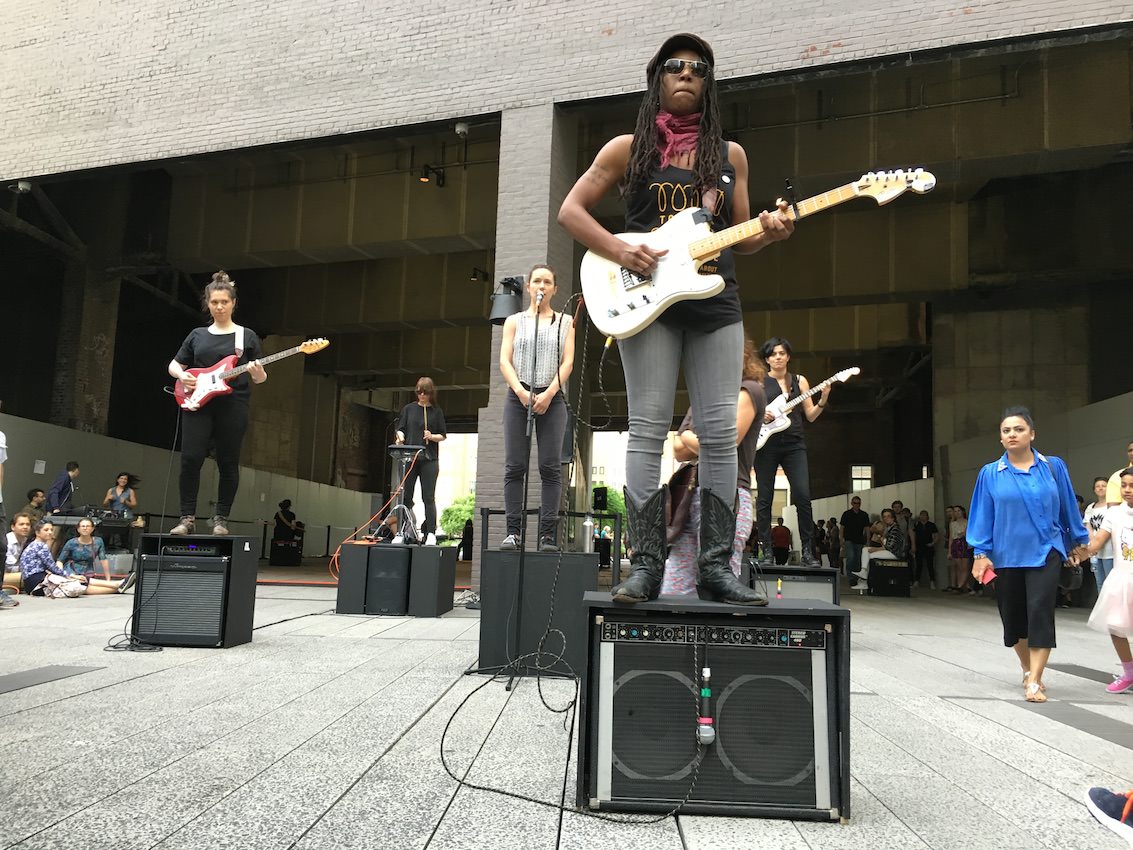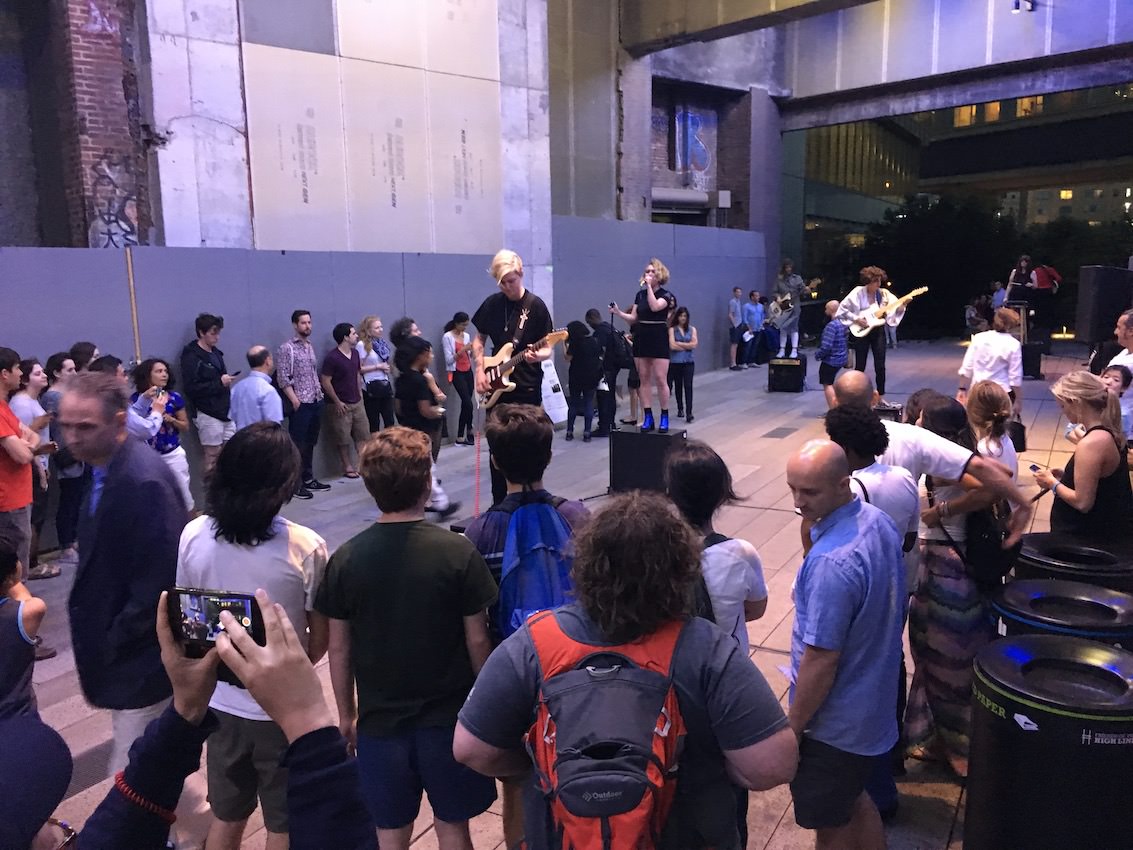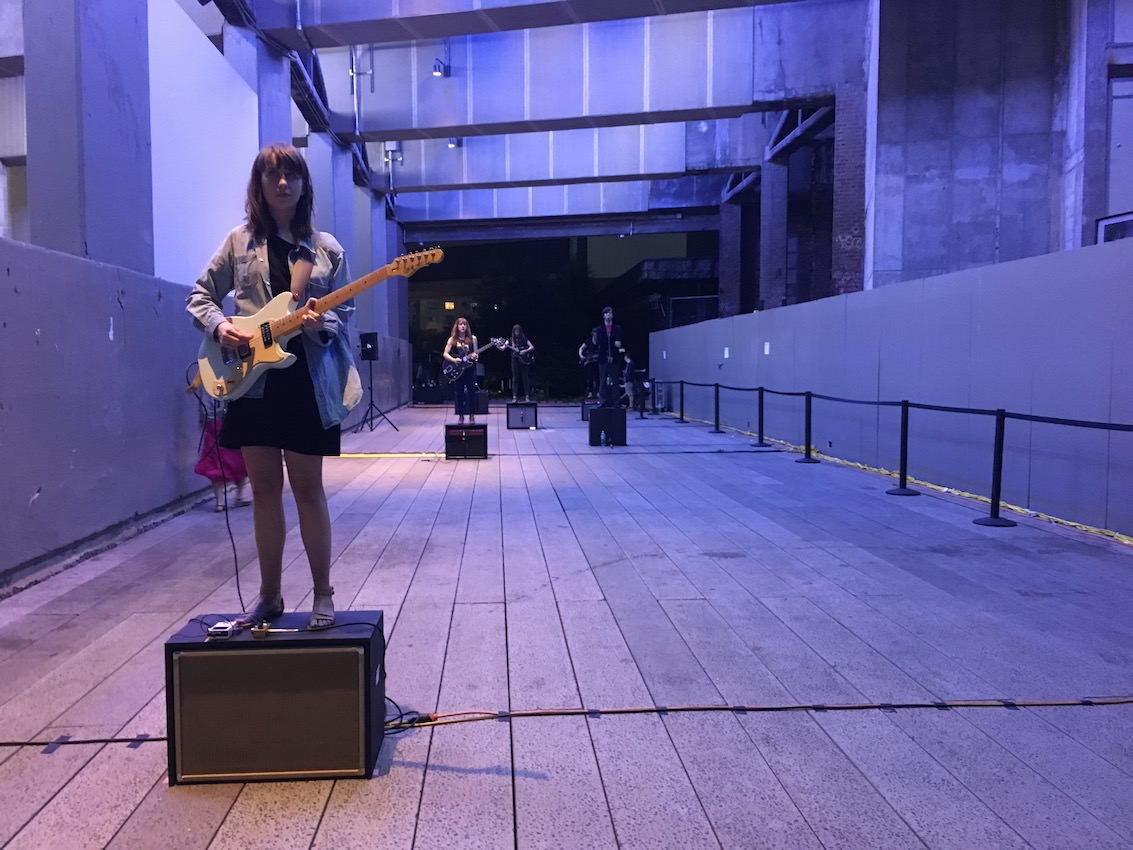The artist Naama Tsabar is presenting “Composition 20,” a musical and visual performance taking place on the High Line in New York June 7, 8, and 9. The Israeli artist spoke to Whitewall while rehearsing and preparing for the event
WHITEWALL: What should a prospective viewer expect from your “Composition 20” performance?

7, 8, 9, June 2016
NAAMA TSABAR: It’s a field of 20 musicians with each musician standing on an amplifier as a pedestal while playing. There will be 20 sound sources scattered throughout a big portion of the 14th Street passage of the High Line. I commissioned two new songs and an old one that’s a cover version of a song in Hebrew. All the songs were written on the same musical structure so they have the same vocal chords, the same beats per minute, and the same musical scale. The 20 musicians are broken up into three bands and at certain points, the bands would be playing all the same song at the same time. So the viewer walking through this field with the movement of his body is taking part in the different songs, he is partaking in a very civil yet personal sound experience.
WW: How do you feel the location of the High Line influences the performance?

Photo by FHL
NT: In this specific case, when I think of the High Line, I think of it as a passageway. It’s very different from all the other parks in the city because you never go into the High Line and get out of the High Line from the same place. It’s a park that takes you from one point in the city to another. I thought of that for this work and the composition serie—how people move through the High Line naturally—and used that movement for this field.
In terms of sound, when you get into the middle of Central Park for example, you’re in nature and that’s what this park makes you feel like you’re not in the city. The High Line in a way is the complete opposite. You hear cars, noise, helicopters, subways, and trains at the end of it. It’s a really lively, animated park sound-wise, and I think that goes really well with the concept of this performance, which is about taking the unified sound of a live performance and breaking it apart into its elements and scattering it around the park.

WW: You recently performed during Frieze week in May at an event we hosted in New York with watchmaker Bell and Ross. Could you describe what you presented that week?
NT: At the Whitewall event I showed new work from an ongoing body of work called “Work on Felt.” In those works I use felt and incorporate other material that gives it the ability to retain tension and be strong. This created material looks like felt on the surface, but acts like a second material. I take a piano string and string it from one point of the felt to another and I tighten it with a guitar tuner to sculpt it. But because the felt has the additional material inside, it not only sculpts the felt, but the piano string becomes playable. It becomes something that you can pluck.
So for the Whitewall event, we made a composition where a singer performed a song with two pieces of felt. These types of sculptures are recurring in my work: sculptures that double both as sculptures and visual representations that shift to functional playable instruments through activation. If you cross this border and touch the artwork, and touch the string and pluck it, you understand that the work has capabilities that are beyond the visual.
WW: Your work is particularly preoccupied with music and nightlife. Why are these two themes of interest to you?
NT: Well, it has to do with my own personal history working as a bartender for many years in Tel Aviv. In these extreme external environments, where all the senses are amplified, a very close thermic experience are created for the goer, whether by alcohol, loud music, light…
For the musical side, music was the first creative output I was exposed to. At a very early age I started playing piano and then moved on to playing the electric guitar. In my twenties I was part of a band and we performed in clubs, bars, on stages. I got to experience a public, yet intimate interaction with both the band members and the viewers. There is something very intimate with this very public display of creativity.
In my projects I’m very interested in the elements that make these spaces function and work. In external environments, one of the materials I go back to is the rubber floor mats used in bars to keep glasses from breaking and help bartenders stand for long durations of time. It’s these visually overlooked materials that functions in these environments and help them do what they do so well, which is create an experience for the goer.
WW: Who are the figures that have inspired you the most in your work?
NT: That’s a very hard question. It’s so vast. If I were to be really honest I would say the people that are the most influential to me are the musicians that are working with me right now on this project. I feed off this collaborative energy.
Also an important side note for me is that in this performance in which there are 20 musicians, 18 of them are women and two of them are men. I just want to underline that ratio, which I consider as being the reverse mirror of what we see in exhibitions and art fairs and in the musical realm in terms of gender equality. I’m very conscious about that so I work mostly with female musicians—not only, but mostly. It’s very important for me to be conscious as a feminist. This is an issue that you can’t overlook. It’s also part of the content of the performance on the High Line, and it will be very visible.









